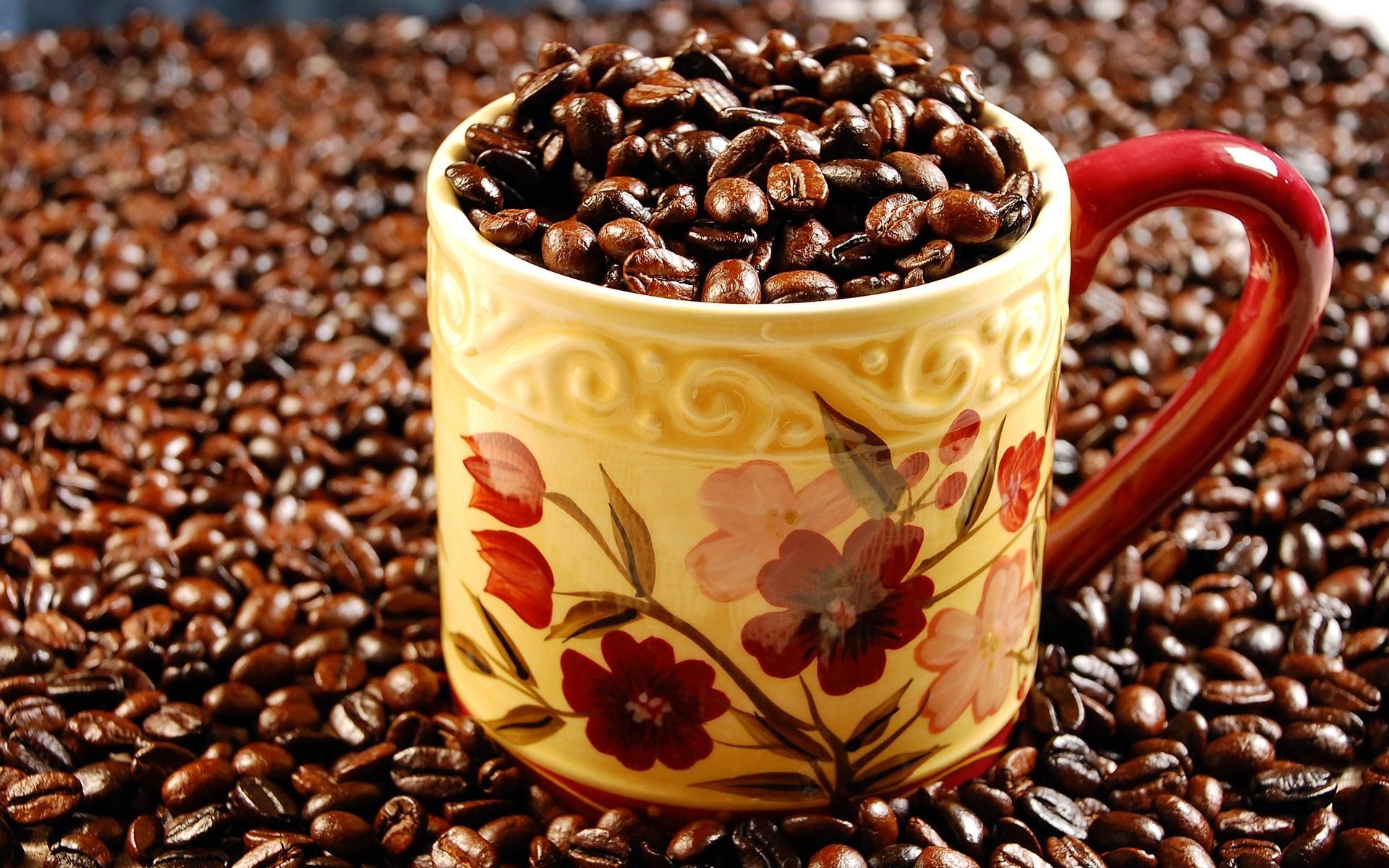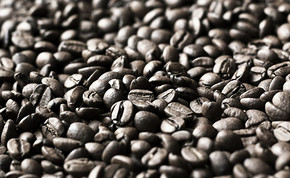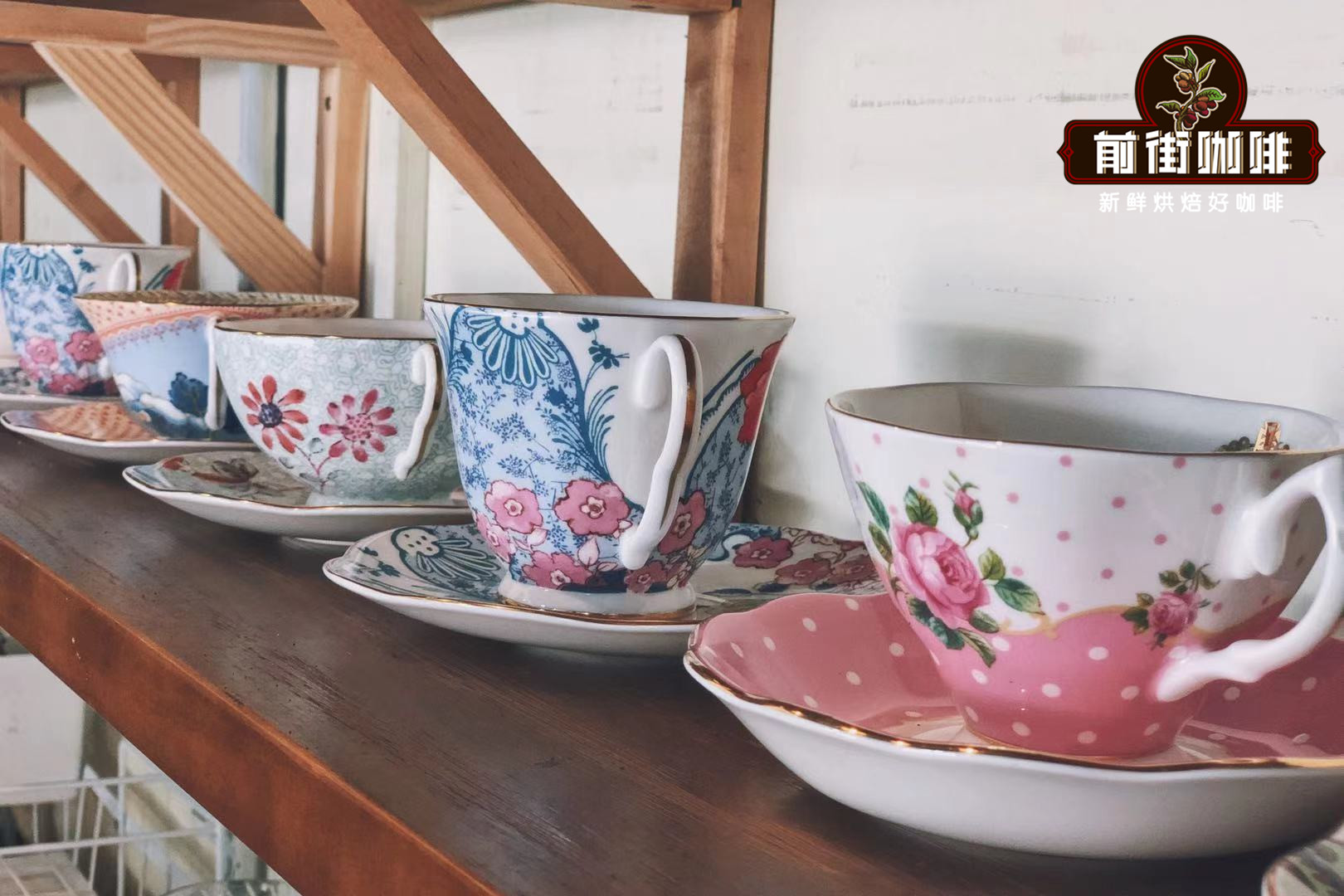Colombian coffee beans hand-flushed
Follow the caf é (Wechat official account vdailycom) and found that Beautiful Cafe opened a small shop of its own.
Calculation method of caffeine content in a cup of coffee: coffee beans used (g) × caffeine percentage of this kind of beans. In other words, if you use 18 grams of Yega to make coffee, regardless of hand brewing, siphon, French pressure, Italian machine, American machine, or Philadelphia pressure, use Yega's 1.4% caffeine ratio, multiplied by 18. This formula is only a rough calculation, not very accurate, but for our questions, it reflects the answer. Why is this so? because of these extraction methods, the best extraction rate is 18% Murray and 22%. At this time, caffeine, as a more soluble substance, is close to complete extraction.
Water temperature: boiling water into the cool hand pot is basically about 95 degrees, at this time to grind beans (I use electric mill, hand or grind first …... As DIMLAU said, 95 degrees starts steaming, and when you flush, the water in the pot can start to flush at about 90 degrees. Basically, the water temperature is always in the right state, and you don't have to worry about it without a thermometer.

Powder-water ratio: for those who are too lazy to understand the golden cup, please read the boldface directly. Citing the rule of the fool's version of the golden cup (temporarily based on the American version of the gold cup, based on the average concentration and average extraction rate of American black coffee drinkers' favorite range of nearly 10,000 random samples), the data is 1.15% to 1.35%, and the extraction rate is 18% to 22%. In the stupid version, then what can we control? The ratio of powder to water, the mid-point recommended brewing ratio of SCAA's golden cup rule is 1buzz 18.18SCAE midpoint 1RV 16.6666666, but due to the diversity of brewing methods, and when the roasting degree of modern boutique coffee is generally not deep (not easy to extract) or pay more attention to the extraction of sweet and sour front flavor (tend to low extraction rate). For example, the use of bypass (a large amount of powder extraction before the flavor is injected with water to the appropriate concentration), so the average extraction rate is not enough, so it is recommended to use 1:16 (1 g coffee powder corresponds to 16ml water). Under this powder-to-water ratio, the extraction rate is low and it is easier to reach a concentration of 1.15% to 1.35%.
Steaming: the first part of steaming is actually strong enough for the water to come into full contact with the coffee powder, exhaust the gas, and infiltrate the coffee powder to facilitate subsequent extraction. So there's no stick? There is a Tilafa, but you can't do it? You look good enough to wet the coffee powder. Japanese brewing will be steamed to only one drop, or not dripping and fully infiltrating, it is useless to tell you, scientifically speaking, it is just enough contact with powder and water. BUT, don't let the water stay too much. Due to the exuberant discharge of the gas, the steaming water is difficult to extract the water solution in the coffee. Too much steaming and dripping means less water that can be extracted normally.
Segmented extraction: in fact, it is water injection. In the video, the main variables that mainly rely on immersion extraction are grinding degree and soaking time. Water injection only needs to pay attention to the fact that coffee powder is soaked, and whether the circle is round or not. Whether the water flow is fine or not can be ignored. About 20g powder, so we only need to control the total extraction time at two and a half to three minutes, the general extraction rate will not be too biased, during which time it is horse step water injection or handstand water injection. There are too many contents in detail, and the experimental data can be used as a reference value. According to the experimental data of CBC Cooking Institute, the best cooking time for 60 g coffee powder corresponding to 1000ml water is 4: 6 minutes (without steaming) because the spoiling capacity of hand flushing is generally lower than that of the American trickling filter, so 6 minutes is recommended as the reference time. So, for example, the reference value of my 400ml water is 6 minutes X 0.4 minutes 2 minutes 24 seconds. For example, after steaming 24g coffee powder (the midpoint ratio of SCAE gold cup) with 400ml water, the remaining water can be injected evenly in 2 minutes and 24 seconds and the water can basically be in the range of gold cup.
Important Notice :
前街咖啡 FrontStreet Coffee has moved to new addredd:
FrontStreet Coffee Address: 315,Donghua East Road,GuangZhou
Tel:020 38364473
- Prev

Which kind of Colombian coffee beans is good?
Following caf é (Wechat official account vdailycom) found that Beautiful Caf é opened a small shop of its own. The history of coffee cultivation in Colombia dates back to the Spanish colonial era in the 16th century, and is said to have come by sea from the island of Haiti in the Caribbean and through El Salvador in Central America. Like other Latin American countries, the main variety of Colombian coffee is Arabica coffee (co
- Next

Colombia Coffee Bean Growing Region Story and Taste Flavor Characteristics Description Claw Coffee Hand Brewing Advice
Pay attention to coffee comment (Weixin Official Accounts vdailycom) and find a beautiful coffee shop to open its own shop Colombia's coffee culture Colombia's coffee culture is also very unique, coffee is the pride of Colombians, Colombians like to talk about a few things most, except their feet that once ranked among the best in the world
Related
- Detailed explanation of Jadeite planting Land in Panamanian Jadeite Manor introduction to the grading system of Jadeite competitive bidding, Red bid, Green bid and Rose Summer
- Story of Coffee planting in Brenka region of Costa Rica Stonehenge Manor anaerobic heavy honey treatment of flavor mouth
- What's on the barrel of Blue Mountain Coffee beans?
- Can American coffee also pull flowers? How to use hot American style to pull out a good-looking pattern?
- Can you make a cold extract with coffee beans? What is the right proportion for cold-extracted coffee formula?
- Indonesian PWN Gold Mandrine Coffee Origin Features Flavor How to Chong? Mandolin coffee is American.
- A brief introduction to the flavor characteristics of Brazilian yellow bourbon coffee beans
- What is the effect of different water quality on the flavor of cold-extracted coffee? What kind of water is best for brewing coffee?
- Why do you think of Rose Summer whenever you mention Panamanian coffee?
- Introduction to the characteristics of authentic blue mountain coffee bean producing areas? What is the CIB Coffee Authority in Jamaica?

